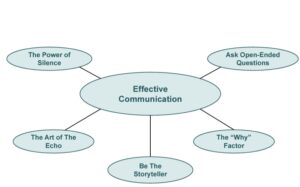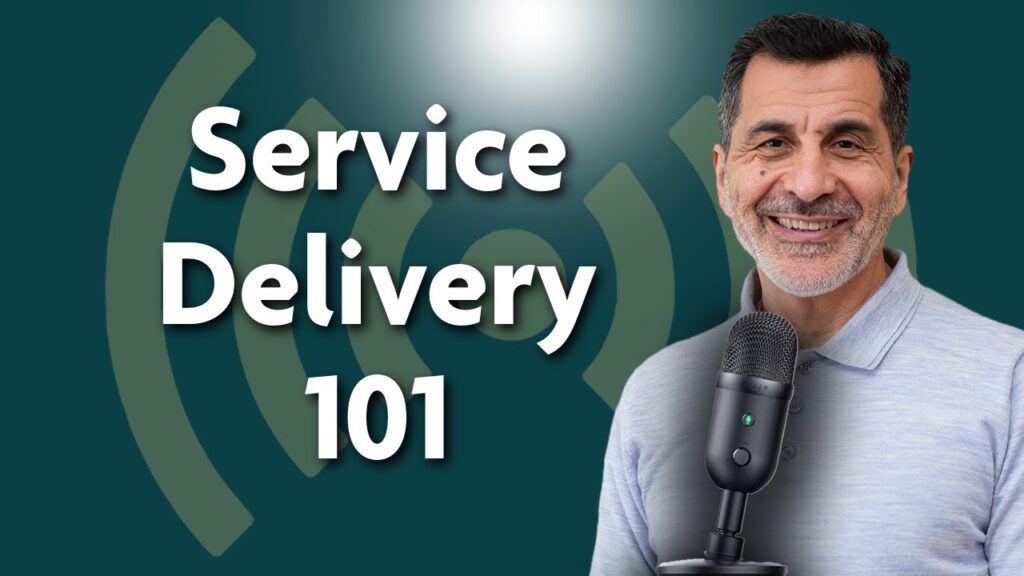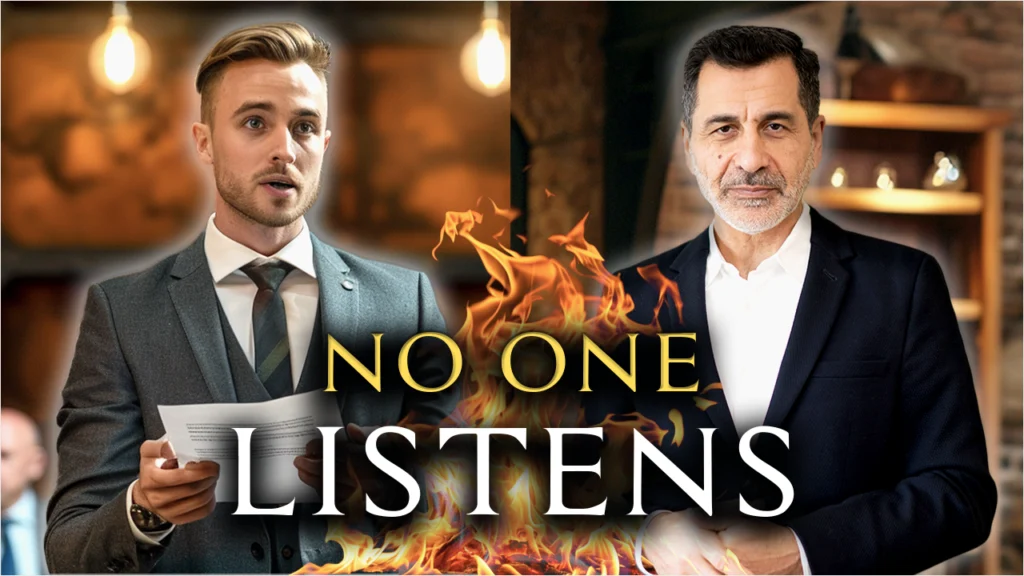How Consultants Can Communicate Effectively with Clients: A Comprehensive Guide

“People will forget what you said, people will forget what you did, but people will never forget how you made them feel.”
– Maya Angelou
What if I told you that you could increase your fees and retain more clients, simply by mastering how to communicate with clients effectively? Studies show 86 percent of customers will pay more for a great experience, and 65 percent of business comes from repeat customers.
In consulting, that ‘great experience’ hinges on effective client communication skills. It’s one of the critical differences between projects that soar and those that crash and burn. This article will help you to master this essential skill.
Watch the live stream where I cover this topic in depth:
Why Good Communication is Crucial for Consultants
Your client relationship is like a thriving garden – it requires time, nurturing, and the right elements to blossom into something truly beautiful. Good communication strategy is the key ingredient that transforms your interactions into a strong and valuable partnership.
When you actively listen to your clients from project start to finish, truly understand their needs, and respond with honesty and without delay. You consistently show that you’re dedicated to their success, thus you’re not just building a business relationship – you’re cultivating a bond of trust and loyalty that will stand the test of time, much like a thriving garden.
Despite its importance, client communication is not without its challenges. Here are some common obstacles that consultants often encounter and how you can address them:
Misaligned expectations
During the sales process and during the project kick-off, have a detailed discussion and create a shared document outlining the project scope, key deliverables, and a realistic timeline. Encourage the client to ask questions and voice any concerns to ensure everyone is on the same page from the start.
Example: You are hired to develop a marketing strategy. The client envisions a comprehensive plan encompassing all aspects of marketing, while your proposal focuses solely on digital marketing. By clearly outlining the scope and deliverables upfront, both you and the client avoid misunderstandings and ensure the project aligns with expectations thus leading to customer satisfaction.
Are you struggling to manage your client expectations? You’ll find this useful.
Communication style differences
Pay attention to how your client prefers to communicate (email, phone calls, in-person meetings) and adapt your approach accordingly. If they’re concise, keep your updates brief and focused. If they like details, provide them.
Example: One client prefers quick email updates while another appreciates detailed weekly reports. You tailor your communication accordingly, ensuring both clients receive information in their preferred format, leading to better engagement and satisfaction.
Lack of responsiveness
Set clear expectations for response times and stick to them. If you commit to a response time of 1 business day, deliver on your commitment. And if you’ll be unavailable, let your client know in advance and provide an alternative contact. Consider using tools like email autoresponders or shared calendars to manage expectations.
Example: A client sends an urgent email on a Friday evening. You have an out-of-office autoresponder set up that informs the client you will respond by Monday morning, providing an alternative contact for emergencies. This manages expectations, builds trust, and prevents the client from feeling ignored.
Jargon and technical language
Imagine you’re explaining the concept to a friend who isn’t in your field. Use analogies and simple language, and avoid acronyms unless you’ve explained them first. If in doubt, ask your client if they understand.
Example: When discussing SEO with a client unfamiliar with the term, you explain it as “improving your website’s visibility on search engines like Google, so more potential customers can find you.” This clear and relatable explanation fosters understanding.
Difficult conversations
Prepare for tough conversations by gathering all relevant information and considering the client’s perspective. Be direct but empathetic, focusing on solutions rather than blame. If necessary, offer options or compromises to reach a mutually agreeable outcome.
Example: A project is facing delays due to unforeseen challenges. Instead of blaming external factors, you proactively inform the client, explain the situation with empathy, and present potential solutions to get the project back on track, demonstrating accountability and problem-solving skills.
Just as a thriving garden requires adherence to specific principles during its, your client relationship, equally precious, demands certain communication principles for it to yield success.
The Most Effective Ways You Can Communicate With Your Clients
While these principles may seem like common sense, mastering them is essential for achieving mutually beneficial outcomes. Here some of are the dos and don’ts of client communication:
DO
Be prompt: Timeliness shows respect for your clients and their time. Respond to inquiries promptly and communicate effectively, even if it’s just to acknowledge receipt and provide a timeline for a more detailed response.
Be clear and concise: Strive for clarity and conciseness in all client communication, always thinking of making it as easy as possible for your client to understand your message is easily understood.
Be Proactive: Don’t wait for your clients to reach out to you. Provide regular updates on project progress, anticipate potential issues, and offer solutions proactively.
Be Respectful: Always maintain a professional and respectful demeanor, even in challenging situations. Treat your clients with courtesy and consideration.
DON’T
Overpromise and Underdeliver: Setting unrealistic expectations can lead to disappointment and damage your credibility. Be realistic about what you can achieve and deliver on your promises.
Be Dismissive: Avoid dismissing client concerns or feedback. Take their input seriously and address their issues in a timely and professional manner.
Be Negative: Maintaining a positive and optimistic attitude will help you build a productive working relationship. Avoid negativity and focus on solutions.
Be Unprofessional: Maintain a professional demeanor in all client interactions, even with team members. Avoid inappropriate language, jokes, or behavior.
Importance of Listening to and Understanding Clients
Active listening is key, whether online, over the phone or in person. It’s not just about hearing words, but truly understanding your client’s message, both spoken and unspoken. Focus intently, avoid distractions, and use verbal cues like “I understand” or “Tell me more” to demonstrate your engagement.
In written communication, like emails, read carefully, avoid assumptions, and seek clarification when needed. Remember, tone and subtext matter – words alone can be misleading.
Professional vs. Casual Communication
Knowing when to adopt a professional or casual tone is crucial. While a friendly and approachable demeanor is important, maintaining a level of professionalism is essential for establishing credibility and trust.
Generally, a more formal and professional tone is appropriate for:
- Initial client meetings
- Contract negotiations
- Delivering formal presentations or reports
- Addressing sensitive or confidential matters
A more casual tone can be suitable for:
- Established client relationships
- Informal check-ins or progress updates
- Brainstorming sessions
- Social events or networking opportunities
However, it’s important to gauge each client’s communication style and preferences. Some clients may prefer a more formal approach even in established relationships, while others may appreciate a more relaxed style.
Communicating with Clients using Various Methods
In this section, we’ll discuss different communication methods, outlining when they are most appropriate and the best practices for using them.
Phone Calls
Phone calls are ideal for verbal communication that might include quick questions, urgent matters, and building rapport. However, they may not be suitable for complex discussions needing visuals, situations requiring detailed records, or when uninterrupted focus is needed. For a successful call, find a quiet place with good service, be mindful of sensitive information in public, and use speakerphone only when necessary.
Video Calls
Video calls blend the personal touch of phone calls with visual cues, making them perfect for building rapport, giving presentations, and complex discussions where non-verbal cues are important. To ace your video calls, prepare in advance, ensure your tech works flawlessly, dress professionally, and choose a clean background. Most importantly, maintain eye contact and engage actively to demonstrate your attentiveness.
Email remains vital for formal communication and sharing details. For effective emails, craft clear subject lines, keep the body concise, and label attachments clearly. Proofread meticulously to maintain professionalism. Aim for brevity (2-3 paragraphs), and follow a clear structure with a greeting, introduction, body, call to action, and closing. Use a professional email address, avoid large attachments, and respond promptly. Remember, clarity and professionalism are key in email communication. Additionally, avoid lengthy back-and-forth discussions, especially on contentious topics. These are often best handled in real-time via phone or, ideally, in-person meetings to ensure clarity and prevent misunderstandings.
Communication Methods to Avoid
While the digital age offers a plethora of communication channels, some are best avoided altogether – or at least used judiciously – when interacting with clients. Unless the client explicitly requests or prefers one of these methods, it’s generally best to stick to more professional channels.
- Social Media DMs: Platforms like Facebook or Instagram are great for initial outreach or building rapport, but they are not suitable for in-depth discussions or sharing sensitive information.
- Text Messages: Texting can be convenient for quick updates or reminders, but it’s not ideal for complex issues or detailed conversations.
- Personal Email: Maintain a clear separation between your personal and professional communication channels.
Remember, your choice of communication method reflects on your professionalism. Opt for channels that prioritize privacy, security, and clarity.
5 Untapped Communication Secrets for Consultants
The Power of Silence
Don’t rush to fill every silence. Sometimes, letting your client think is more productive than filling the air with words. It’s like giving them space to process their own existential dread.
Ask Open-Ended Questions
“What do you think about this approach?” rather than “Do you like this?” It encourages more detailed feedback and shows you value their input.
The Art of the Echo
Repeat back key points or concerns. “So, if I understand correctly, your main concern is…” It shows you’re listening and helps clarify misunderstandings.
Be the Storyteller
By framing your insights within a narrative, you not only make your recommendations more relatable but also emotionally compelling. For instance, when presenting a new strategy, start with a story about a similar company that faced the same challenges, detailing their journey from struggle to success.
This approach not only illustrates the potential outcomes but also builds a bridge of trust and understanding, making your solutions feel like a natural next step in the client’s own story.
The ‘Why’ Factor
Always explain why something is important or why you’re suggesting a particular course of action. People are more likely to buy into solutions when they understand the reasoning.

5 Untapped Secrets To Help You Communicate With Your Client Effectively
Beyond these essential communication tips, there’s another critical aspect to master:
Preparing for Client Meetings
Effective client interactions hinge on thorough preparation. As we say here at Start Up With Feras, “Remember the 5Ps: Prior Preparation Prevents Poor Performance.” Before any meeting, define the purpose and objectives, prepare an agenda, anticipate questions, gather relevant materials, and practice your delivery. This will help you improve your professionalism, build confidence, and ensure productive outcomes.
Importance of the Follow-Up
Never underestimate the power of the follow-up. A practice I abide by is to always document or write down meeting notes and action items. If you do end up making a follow-up call, do indeed send a summary email of the discussion to everyone, to ensure everyone is clear on what was discussed and the action items. It’s a simple but powerful way to demonstrate your commitment and keep the client relationship thriving.
Collecting and Implementing Feedback
Client feedback is your compass for improvement. Regularly solicit feedback, offer multiple channels for input, and actively listen to what your clients have to say. Most importantly, take action on the feedback and let your clients know how their input has made a difference. This shows you value their opinions and are dedicated to continually enhancing your services.
Strong Communication Builds Strong Client Relationships
Mastering communication skills and utilizing the right tools is an ongoing process that requires continuous effort. Invest in your communication skills to deliver exceptional results, cultivate client loyalty, and build a reputation for excellence.




